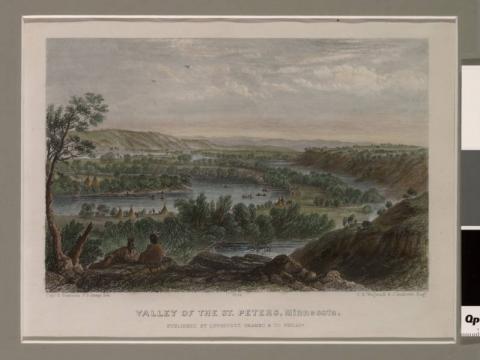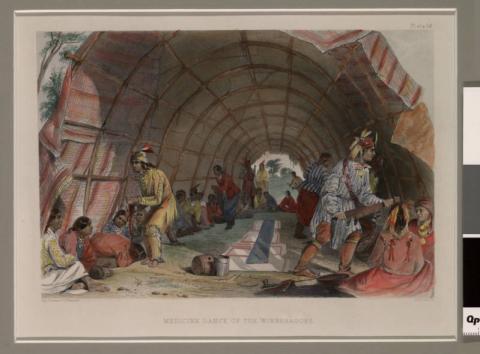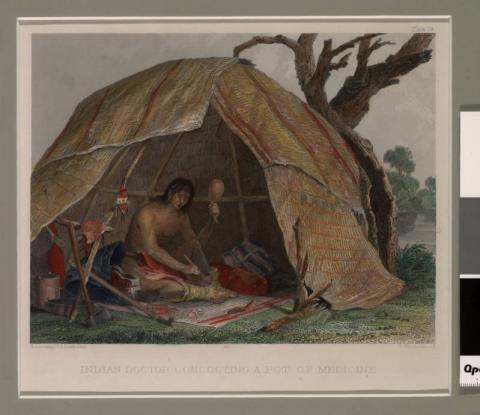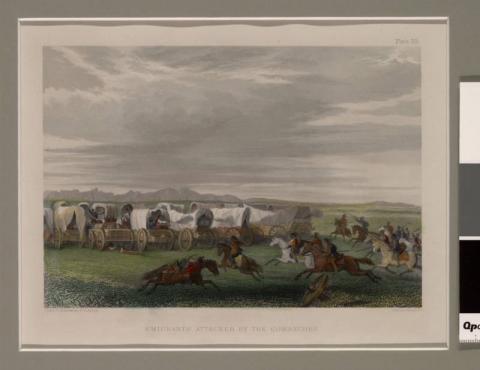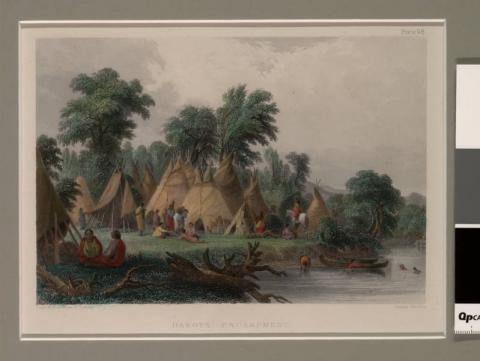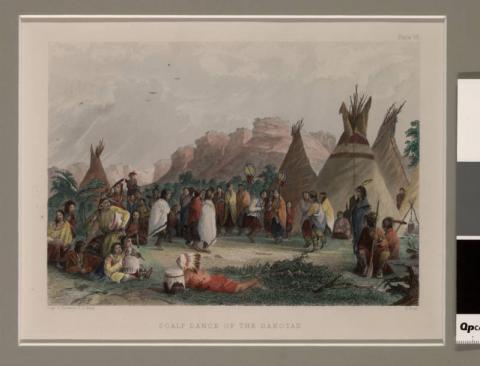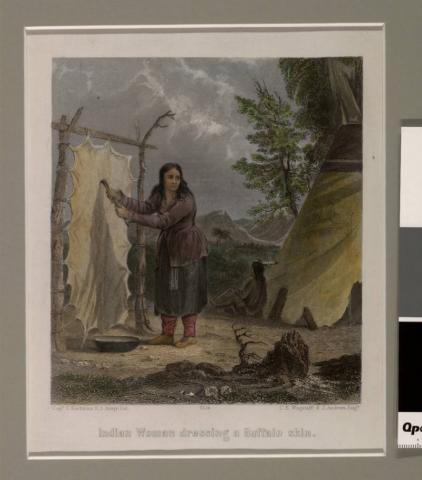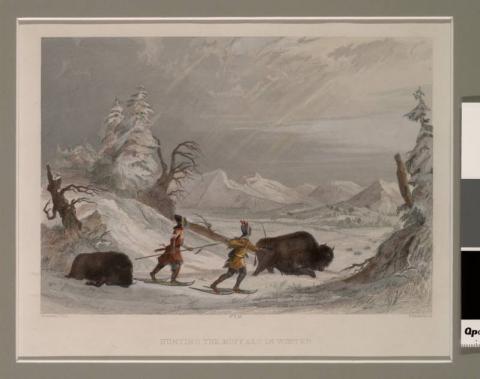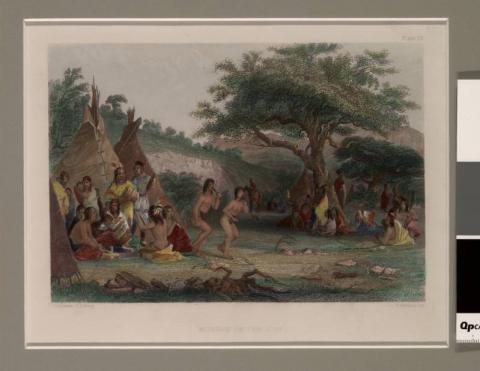Primary Source Set
by Beth Staats, Reference Outreach & Instruction Librarian, Minitex
American Indians Arts and Literature
Seth Eastman (1808-1875) graduated from West Point and served in the U.S. Army as a mapmaker and illustrator. While stationed at Fort Snelling, Minnesota, he was instrumental in portraying Native American life. Eastman depicted the everyday life of the Dakota and Ojibwe people through his paintings, drawings, and sketches. The U.S. Government comissioned works by Eastman, some of which still hang in the U.S. Capitol. Eastman’s paintings are considered essential documentation of Dakota life and culture.
Discussion Questions & Activities
When you look at these images, documents, and transcripts in MDL, be sure to use the zoom-in tool to view subtle details in the images and enlarge text for easier reading.
- What can you learn about Dakota life from Seth Eastman's paintings?
- What can you learn from viewing the images of Native American life and what are the stereotypes you identify from them?
- How might the depictions of Native Americans be different if painted by one of their own?
- How does Seth Eastman depict women vs. men in his paintings?
- Who do you think built the structures represented in the paintings? What style of home is depicted?
- Watch the brief video from PBS Alamanc on Seth Eastman and answer the question: What new information did you learn about the Dakota that you did not learn from looking at the paintings?
- Check out Minnesota Indian History and Culture Lessons for more.
- View the Bdote Memory Map.
eLibrary Minnesota Resources (for Minnesota residents)
"1853: Native American Women Frightening Birds In Their Cornfields." Original Artwork: Engraving By James Smillie After A Drawing By Captain Seth Eastman (Photo By MPI/Getty Images) -- Image Date: 1/1/1853 -- Image Date: 1/1/1853. (n.d.): Image Collection. Web. 19 Feb. 2016.
Bergson, Zach. "War, before & after." Hill 03 July 2012: 19. MasterFILE Premier. Web. 22 Mar. 2016.
"Circa 1835: A Native American Woman In Minnesota Scrapes And Dresses A Deerskin Stretched Across A Wooden Frame." Original Artwork: Painting By Seth Eastman. (Photo By MPI/Getty Images). (n.d.): Image Collection. Web. 19 Feb. 2016.
Jablow, Valerie. "A Soldier Artist On The Plains." Smithsonian 32.2 (2001): 42. MasterFILE Premier. Web. 22 Mar. 2016.
"Seth Eastman's West." American History 31.4 (1996): 42. MasterFILE Premier. Web. 22 Mar. 2016.
Additional Resources for Research
Historic Fort Snelling, Minnesota Historical Society
Perspective: Seth Eastman [1808-1875], Western Art & Architecture
Seth Eastman: Painting the Dakota, PBS
Seth Eastman: Pioneer & Painter, Minnesota Historical Society
The Artist: Seth Eastman, Center of Military History, U.S. Army
The House Indian Affairs Commission-- Seth Eastman's American Indian Paintings in Context, Federal History, 2010
Published onLast Updated on
